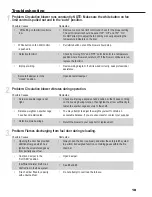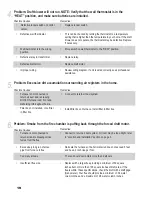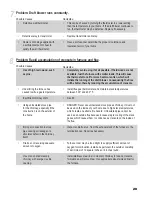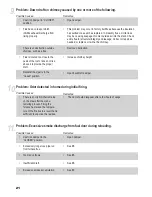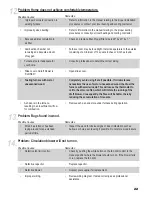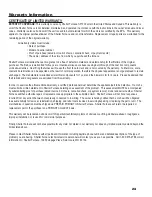
WARNING- RISK OF FIRE:
• Do not operate with flue draft exceeding .08 water column inches (19.9 Pa).
• Do not operate with fuel loading or ash removal doors open.
• Do not store fuel or other combustible materials within marked installation clearances.
• Inspect and clean flues and chimney regularly.
DANGER: Risk of Fire and Explosion. Do not burn garbage, gasoline, naphtha, engine oil, or other flammable liquids/inappropriate
materials.
WARNING:
• NEVER use galvanized pipe in your chimney connection, it produces poisonous gases when subjected to extreme
temperatures.
• USE only lined masonry or manufactured Class “A” HT2100 All Fuel Chimney for your furnace.
• INSPECT chimney system periodically for structural integrity.
• CLEAN the chimney system regularly to prevent creosote accumulation.
• NEVER leave the ash pan in your furnace during operation.
• DO NOT CONNECT THIS UNIT TO A CHIMNEY FLUE SERVING ANOTHER APPLIANCE.
Duct
Runs
Ductwork should be designed so the external static pressure on high speed does not exceed .02 water column inches while developing
air velocities of 450 - 600 feet per minute at the registers. The heat outlet area should never be less than two 8-inch round pipes or
100 square inches. The furnace can be installed with a cold air return system, or the return air can be drawn from the basement. If the
return air is drawn from the basement, you will have to install 3 “open and close” air register vents in the return air duct connected to your
existing furnace; the air will take the path of least resistance without using ductwork to connect the two together. The return air system
should be a minimum of 10% larger than the heat outlet to readily transfer the cold air back to the furnace. Avoid using 90° elbows in
duct runs; 45° elbows provide better airflow and less resistance. CAUTION: The warm air supply outlet of the supplementary furnace
should not be connected to the cold air return inlet of the central furnace, because a possibility exists for components to overheat and
cause the central furnace to operate other than intended.
Canadian Requirements for Supplemental/Add-On Furnaces
• DO NOT USE DUCT ELBOWS HAVING AN INSIDE RADIUS OF LESS THAN 6 inches (150mm) ON OIL,
ELECTRIC, OR GAS FURNACES.
• DO NOT CONNECT TO A DOWNFLOW FURNACE.
• DO NOT CONNECT DUCTWORK SO THAT A REVERSE FLOW IS POSSIBLE.
• OPERATE THE GAS/OIL/ELECTRIC/ FURNACE PERIODICALLY TO ENSURE THAT IT WILL OPERATE
SATISFACTORILY WHEN NEEDED.
• CERTIFIED FOR INSTALLATION WITH APPROPRIATE DUCTWORK CONFIGURATIONS ONLY.
• DO NOT RELOCATE OR BYPASS ANY OF THE SAFETY CONTROLS IN THE ORIGINAL GAS/OIL/ELECTRIC
FURNACE INSTALLATION.
• DO NOT CONNECT TO ANY GAS FURNACE THAT HAS NOT BEEN CERTIFIED INITIALLY AS COMPLYING
WITH CAN/CGA-2.3.
• THE OPERATION OF THE GAS FURNACE MUST BE VERIFIED FOR ACCEPTABLE OPERATION BEFORE AND AFTER
INSTALLATION OF THE ADD-ON APPLIANCE BY A GAS FITTER WHO IS RECOGNIZED BY THE
REGULATORY AUTHORITY.
• DO NOT CONNECT TO ANY GAS FURNACE THAT IS NOT EQUIPPED WITH AN AIR-CIRCULATION BLOWER,
OR TO A CHIMNEY OR VENT SERVICING A GAS FURNACE OR GAS APPLIANCE.
The add-on unit should only be installed on a furnace duct system and chimney that are in good operating condition.
If exhaust fans are installed in the storage area they should not create negative pressures in the room where the solid fuel-burning
appliance is located.
4
4
4
4
9
Содержание Shelter Furnace SF1000
Страница 2: ...This Page Intentionally Blank...
Страница 26: ...This Page Intentionally Blank 23...
Страница 28: ...This Page Intentionally Blank...





















